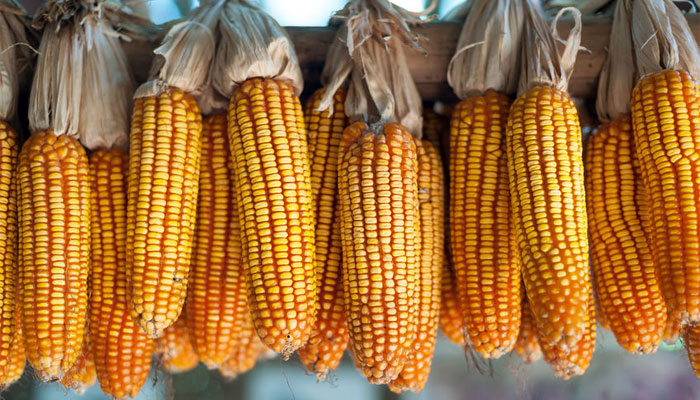
Drying foods for preservation has been practiced for thousands of years and is still practiced today. Drying foods not only preserves it but also reduces the volume and weight, making it easier to store and transport.
Corn is one of those foods that can be dried with relatively little intervention by you. The drying process is straightforward and depending on the method used, there is minimal waste.
A hand full of dried corn was often times the only daily food people had as they hunted for wild game or moved along the trail.
Archeological evidence of corn’s early presence in the western hemisphere was identified from corn pollen grain considered to be 80,000 years old obtained from drill cores 200 feet below Mexico City.
Another archeological study of the bat caves in New Mexico revealed corn cobs that were 5,600 years old by radiocarbon determination. Most historians believe corn was domesticated in the Tehuacan Valley of Mexico. The original wild form has long been extinct (Iowa State University Department of Agronomy, 2002).
Corn is often classified as dent corn, flint corn, flour corn, popcorn, sweet corn, waxy corn, and “pod” corn. Dent is the major type cultivated in the United States (Iowa State University Department of Agronomy, 2002).
Drying corn can be as simple as pulling the husks back and hanging the cobs in a breezy, sunny, and dry area. Corn can also be placed on newspaper to dry as well. Drying corn on the cob does take longer because the cob has to dry out as well, and you will have mold develop on some ears, because of the high moisture content. Air circulation and low humidity are crucial to the process.
Another method is to remove the kernels after blanching the corn for ten minutes in boiling water. Blanching will stop a certain enzyme process that can affect the flavor of the dried corn, and it stops the ripening process as well.
This traditional Native American method is still being used today by members of the Sisseton Wahpeton Oyate in Northeastern South Dakota (Lorna Saboe-Wounded Head, Gabrielle Tiomanipi, n.d.).
Sweet corn that is left to mature is ideal because the kernels are larger and easier to remove from the cob after blanching. Once the corn has been removed from the boiling water, it is important that you practice safe food handling procedures. You do not want to contaminate the corn, so make sure your work area is disinfected, and that you wash your hands thoroughly before handling the corn. Let the corn cool before removing from the cob. You want to remove the kernels with limited damage.
A spoon works well to “pop” the kernels loose with little damage. Work one row at a time with the spoon over a bowl to collect the kernels. This process is more time consuming but by no means complicated. The loose kernels will dry faster dramatically reducing the chance of mold developing, so it is well worth the time and effort to use this method.
Once you have removed the kernels you can spread them on a clean screen that can be used for food, in other words, a material that can be cleaned prior to use such as plastic netting that can be washed with soap and water. One method is to attach the screen material to the underside of a wooden frame so you can put a cheesecloth cover over the frame without touching the corn that is spread loosely on the screen. You need to protect the corn from insects, dust, and other debris.
Breezy, sunny, and warm (80-90° F) is ideal. Stir the corn throughout the day and at night bring inside, and store in your refrigerator if available otherwise in the coolest driest area possible to reduce spoilage. Leaving the corn outside overnight will slow or even ruin the process because of several factors, one being heavy dew in the early morning hours.
It will take four or five days for the process to be completed under ideal conditions and of course may take longer under less than ideal drying conditions. You want kernels that will crumble when hit with a rock or hammer. Moisture allows for the growth of bacteria and mold, so it is important that the corn is allowed to dry sufficiently, and once dried the corn can be stored for years.
From this point, the corn can be ground into meal or the kernels can be placed in soups or other recipes that would allow for reconstitution of the kernels.
Iowa State University Department of Agronomy. (2002). Retrieved 2016, from http://agron-www.agron.iastate.edu/Courses/agron212/readings/corn_history.htm
Lorna Saboe-Wounded Head, G. T. (n.d.). Retrieved 2016, from http://pubstorage.sdstate.edu/AgBio_Publications/articles/ExEx14090.pdf